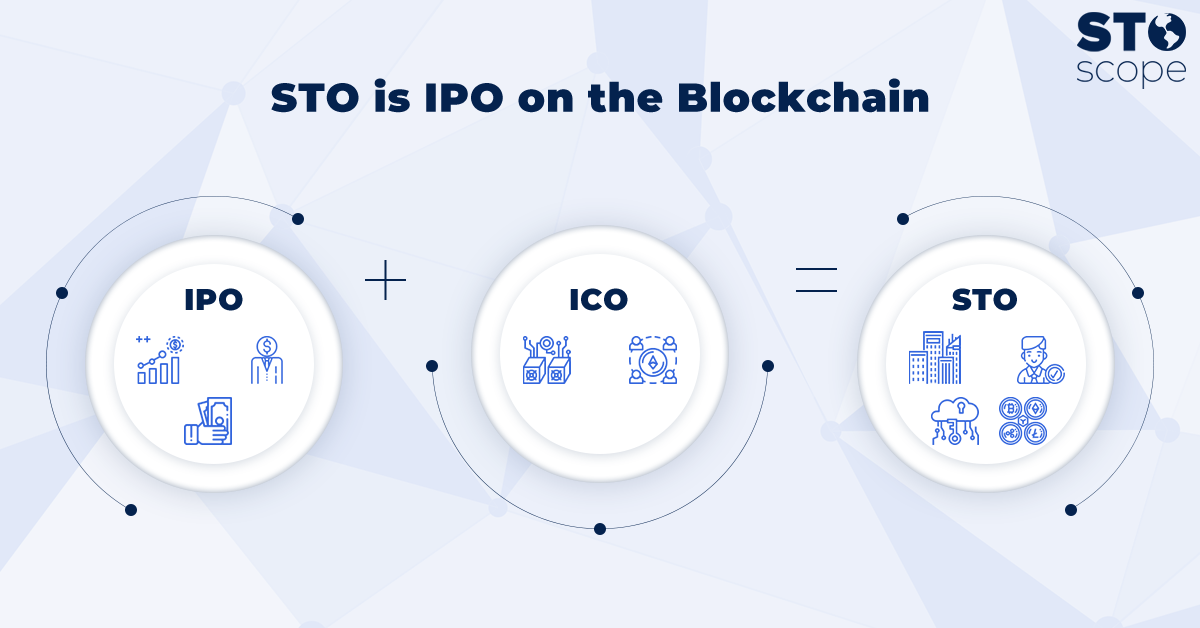

Introduction
When Blockchain technology went mainstream, sometime around 2015, things took a turn for the better. The materialization of cryptocurrencies and the birth of ICOs (initial coin offering) changed the way startups and companies raised money; thus opening a broader market accessible to everyone looking to invest, not just accredited investors.
The rise in popularity of asset tokenization bridges the gap between old-fashioned and new capital markets. Fundraising on the blockchain is a token sale event where startups sell proprietary digital tokens, making the buying process of digital tokens a bet made by investors on utility and value. As opposed to an IPO, anyone can participate in an ICO.
As a consequence, initial coin offerings amassed a total of $5.6 billion raised in 2017. In 2018, the road to success via an ICO has paved with rather tough challenges. Some companies switched back to the old-fashioned IPO; the smartest ones chose the STO (security token offering); an investment model that combines the unique aspects of an ICO with best features of an IPO.

The good & the bad of IPOs
Proposed decades ago by banks, regulators and VC firms, conventional fundraising is not meant for the faint-hearted. Entrepreneurs interested to launch an IPO are invited to pitch their ideas or product, put together several presentation desks, and meet with potential partners before being approved. Following a long process of negotiations over valuation and equity - where entrepreneurs forfeit control and ownership in the company - the startup goes public and hits the stock market.
Overall, going for an IPO has proven to be daunting, expensive, and somewhat frustrating for those that don’t get approved. Due to the various limitations and constraints implicated, increasingly more entrepreneurs fought to find better solutions. In 2015, the Ethereum Blockchain introduced the ERC-20 token standard, which allowed companies to issue their very own digital tokens and use them as leverage for investors. At first, it was a dream come true for startups that couldn’t afford an IPO because the unregulated nature of ICOs allowed them to raise money to scale their business.
Things turned sideways when governments took notice. Some of them like the SEC banned ICOs completely, whereas others welcomed them with open arms. The problem with ICOs was that companies started scamming investors with a whitepaper, a vision, and a pretty website.
Switching from IPO to ICO
As DLT-based technologies increased in popularity in 2016 and 2017, startups - particularly those in the tech niche - expressed an interest to try out the ICO. At the time, making the switch was easy as there were no conditions for issuing a token sale event; no rules, no regulatory entity. As a consequence, 2017 was the year of ICOs. As IPO registration dropped, the US Securities and Exchange Commission (SEC) was the first to spot the irregularities.
Essentially, tokenization enables startups to raise money without going through an intermediary. The tokens serve as leverage and they are meant to provide assurance to investors in the future. Concerns regarding the validity of ICOs emerged in 2018 following a study that highlighted that 70% of ICOs issued in 2017 didn’t have real utility proposition. The tokens issued were not backed by anything, which meant that many startups were selling dreams for millions of dollars.
Amid an ocean of scams and a pool of angry investors, ICOs reached rock bottom bringing down the entire crypto market.
How ICOs have morphed into STOs
Following massive drops of both Bitcoin and Ethereum, as well as a period of hype and FOMO, a new form of funding surfaced: the security token offering (STO). Backed by real-life assets, clearly defined rules and regulations, and a complete verification process for investors, STOs seemed to provide better leverage than ICOs. The anonymity involved in an ICO jeopardized investors, products, and ultimately, business model because it triggered pump and dump schemes, affecting volume and triggering unexpected spikes in the crypto market.
Market manipulation in the crypto world comes in all shapes and forms. Since ICOs are unregulated and the rules differ from country to country, there’s no guarantee investors will get what they’ve been promised. At the heart of an STO lies a startup issuing a security token; a fully regulated digital asset that bridges the gap between conventional financial assets and cryptocurrency. Unlike utility tokens, security tokens provide “programmable ownership”, bringing intrinsic value to the asset being tokenized.
Also, they unlock liquidity via self-executing smart contracts without putting investors at risk. To ensure complete transparency, STOs require investors to go through a detailed KYC/AML verification process. The aim of the process is to protect them from pumps and dumps, a common practice with ICOs. For 2019, we should expect more STOs to emerge, as well as more exchanges accepting to list security tokens as opposed to utility tokens. It is estimated that there will also be an increase in exchanges accepting to list security tokens due to their intrinsic value and potential for high returns.
The Malta Stock Exchange and Binance are already thinking about joining forces to launch a trading platform for trading security tokens.

Does IPO + ICO = STO?
Yes and no. There have been rumors that STOs will replace ICOs completely at some point, however nobody can know for sure what will happen. Blockchain is unpredictable, and although there are similarities between an ICO and an STO, there are also substantial differences. Investor protection and a rigorous verification process for all investors are just two of them. An STO can be better compared with an IPO on the blockchain. Then again, unlike the stock market, the blockchain is decentralized; which makes STOs a more convenient funding method for early-stage startups out there seeking to raise money and become unicorns.
The beauty of an STO is that at its heart lies a security token backed by something tangible. Whether it’s gold, real estate, stocks, rare art, or even collectibles, the benefits are greater than an ICO and IPO combined. Entrepreneurs have gotten tired to fight with regulation; they don’t want to give up ownership, nor do they want to spend millions on developing a product that might not get accepted. Going public with your company is expensive, not to mention the filing process can take up to 6 months.
Rumor has it that security token offerings are IPOs on the blockchain; a far-fetched statement with a certain amount of truth. A more realistic definition would be something like: a hybrid approach that brings together the best of ICO minus the worst of IPO, its aim being to protect both startups and investors.
Other Posts




